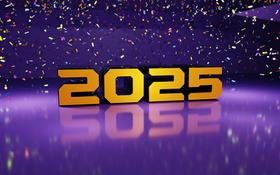For the 2025-26 school year, there are 4 public elementary schools serving 2,594 students in Munster, IN. The top ranked public elementary schools in Munster, IN are Frank H Hammond Elementary School, Ernest R Elliott Elementary School and James B Eads Elementary School. Overall testing rank is based on a school's combined math and reading proficiency test score ranking.
Munster, IN public elementary schools have an average math proficiency score of 67% (versus the Indiana public elementary school average of 41%), and reading proficiency score of 61% (versus the 40% statewide average). Elementary schools in Munster have an average ranking of 10/10, which is in the top 10% of Indiana public elementary schools.
Minority enrollment is 49% of the student body (majority Hispanic), which is more than the Indiana public elementary school average of 37% (majority Hispanic and Black).
Best Public Elementary Schools in Munster, IN (2025-26)
School
(Math and Reading Proficiency)
(Math and Reading Proficiency)
Location
Quick Facts
Rank: #11.
Frank H Hammond Elementary School
(Math: 80% | Reading: 63%)
Rank:
Rank:
10/
Top 5%10
1301 Fran-lin Pky
Munster, IN 46321
(219) 838-2060
Munster, IN 46321
(219) 838-2060
Gr: PK-5 | 647 students Student-teacher ratio: 18:1 Minority enrollment: 45%
Rank: #22.
Ernest R Elliott Elementary School
(Math: 75% | Reading: 61%)
Rank:
Rank:
10/
Top 10%10
8718 White Oak Ave
Munster, IN 46321
(219) 838-5250
Munster, IN 46321
(219) 838-5250
Gr: K-5 | 487 students Student-teacher ratio: 17:1 Minority enrollment: 44%
Rank: #33.
James B Eads Elementary School
(Math: 75% | Reading: 57%)
Rank:
Rank:
10/
Top 10%10
8001 Harrison Ave
Munster, IN 46321
(219) 836-8635
Munster, IN 46321
(219) 836-8635
Gr: K-5 | 517 students Student-teacher ratio: 17:1 Minority enrollment: 59%
Rank: #44.
Wilbur Wright Middle School
(Math: 57% | Reading: 61%)
Rank:
Rank:
9/
Top 20%10
8650 Columbia Ave
Munster, IN 46321
(219) 836-6260
Munster, IN 46321
(219) 836-6260
Gr: 6-8 | 943 students Student-teacher ratio: 20:1 Minority enrollment: 49%
Munster, Indiana Public Schools (Closed)
School
Location
Quick Facts
8001 Harrison Ave
Munster, IN 46321
(219) 836-7303
Munster, IN 46321
(219) 836-7303
Gr: PK | 161 students Minority enrollment: 13%
Frequently Asked Questions
What are the top ranked public elementary schools in Munster, IN?
The top ranked public elementary schools in Munster, IN include Frank H Hammond Elementary School, Ernest R Elliott Elementary School and James B Eads Elementary School. Munster has one of the highest concentrations of top ranked public schools in Indiana.
How many public elementary schools are located in Munster?
4 public elementary schools are located in Munster.
What is the racial composition of students in Munster?
Munster public elementary schools minority enrollment is 49% of the student body (majority Hispanic), which is more than the Indiana public elementary schools average of 37% (majority Hispanic and Black).
Which public elementary schools in Munster are often viewed compared to one another?
Popular comparisons of public elementary schools in Munster include: Ernest R Elliott Elementary School vs. Frank H Hammond Elementary School, Frank H Hammond Elementary School vs. Ernest R Elliott Elementary School, James B Eads Elementary School vs. Ernest R Elliott Elementary School
Recent Articles

Texas Schools Enrollment Trends & Policy in 2025
Latest data and policy changes on Texas public school enrollment growth, funding, and virtual education in 2025.

Financial Aid & Hidden Costs in Public Schools
Learn about financial aid and hidden costs in public schools. Discover what parents should budget for beyond tuition-free education.

NYC Schools Still Most Segregated in 2025
Despite reforms, New York City schools remain the most segregated in the U.S. in 2025. Here’s what parents and educators need to know.
